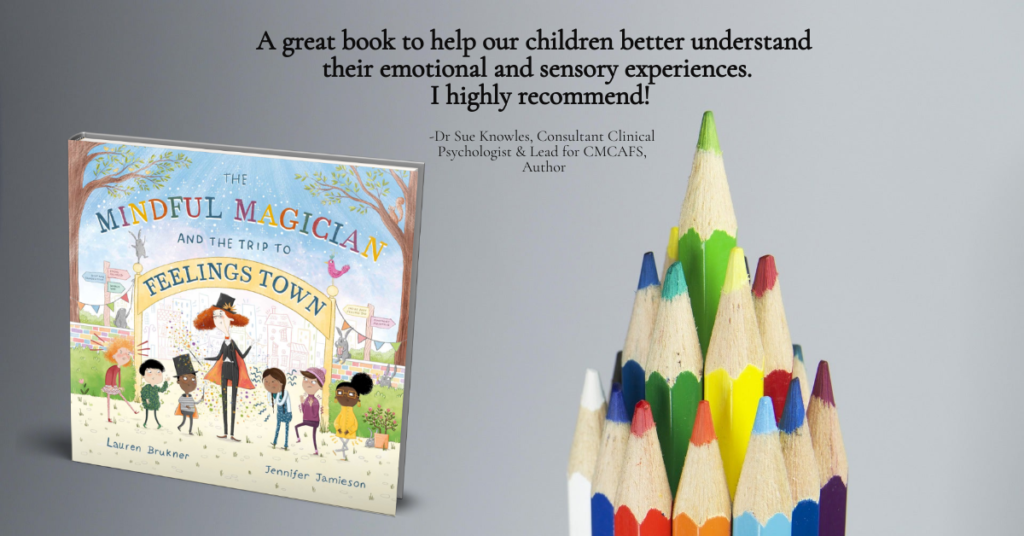The Mindful Magician by Lauren Brukner releases on April 21, 2023.
Can you briefly outline your history? How has this background influenced what you write about?
I have been a practicing pediatric occupational therapist for almost fifteen years in the school setting. Before creating the Awesome and in Control program, I would often see adults working with students telling them how they were feeling and choosing what strategies and tools that the child should use. I felt that it was extremely important for students to be able to label their feelings and choose research-based tools and exercises connected to those states of regulation in order to get to that just right state; that is, to take control over feelings that felt out of control.

What was your initial inspiration to write The Mindful Magician?
I evaluate and work with a variety of students who would benefit from a simplified approach to the self-regulation process from a sensory perspective, with less options to address different states of regulation. I also felt intrigued about publishing a full color picture book!
What do you hope parents learn from The Mindful Magician?
I truly want to empower parents and caregivers to provide their children with tangible supports (in the form of small movement exercises) to address different states of regulation. As a parent myself, I truly see the value of not requiring any external tools to have your children be able to get to that “just right state”-to rely on their own body and minds. It is, however, important to practice these strategies consistently, model them yourselves, and link these exercises to different situations in your own life. There are also additional exercises and strategies link to different states of regulation available as a download if you would like more strategies, as well.
What do you hope children take away from The Mindful Magician?
I hope that children reading this book realize the power of connecting their bodies and minds to magically take feelings that feel overwhelming from an emotional/physical standpoint and tangibly do something about them. I hope that this book also equips them with the knowledge to understand different feelings, to label them functionally, and to have the regulative power to choose the connecting strategy to self-regulate.
How can teachers use The Mindful Magician in a classroom or other school setting, including home school?
Parents and teachers can utilize this book in the school/homeschool setting as a read aloud. Teachers can read one story per week to the class, and then discuss how students can utilize this magical power in their every day life-both at school/home/in their community. Depending on their developmental level, students can draw/label/write a sentence to elaborate. This can then be sent home to allow for transfer of this magical power/strategy in all settings. You can also integrate this into classroom newsletters! You may want to create a visual of the rainbow wand as a poster in the classroom, with different colors representing different strategies learned from each area visited. Students can creating their own at their desks, drawing/coloring each section as they go until they fill it in. It will also act as a visual reminder to utilize learned strategies/magical powers!
In the past couple years, so much research has been done on neurodiversity and how kids learn and reactdifferently. What are small steps teachers and educators can take to ensure all kids are getting the best out of their school day?
Equipping classrooms with tools and supports to account for learning differences from a sensory perspective is vitally important, both from a UDL perspective and through differentiation. For example, it’s important to teach universal language around self-regulation (ie-Slow and Tired, Fast and Wiggly), and to have connected tools and supports around the learning environment, paired with accessible visuals for all learners. Visual timers tied to how long we should expect students to sit for activities (approximately one minute per year of age), followed by a movement break, can work to improve focus. Natural lighting can work to improve regulation as a UDL as well. Cool down spaces with decreased visual and auditory input should work to decrease fight or flight behaviors. Some students may benefit from individualized self-monitoring checklists and self-regulation tool kits with sensory supports tied to states of regulation in order to participate maximally within the academic setting.
Are there any other resources you recommend?
Check out all seven books in the Awesome and in Control book series!